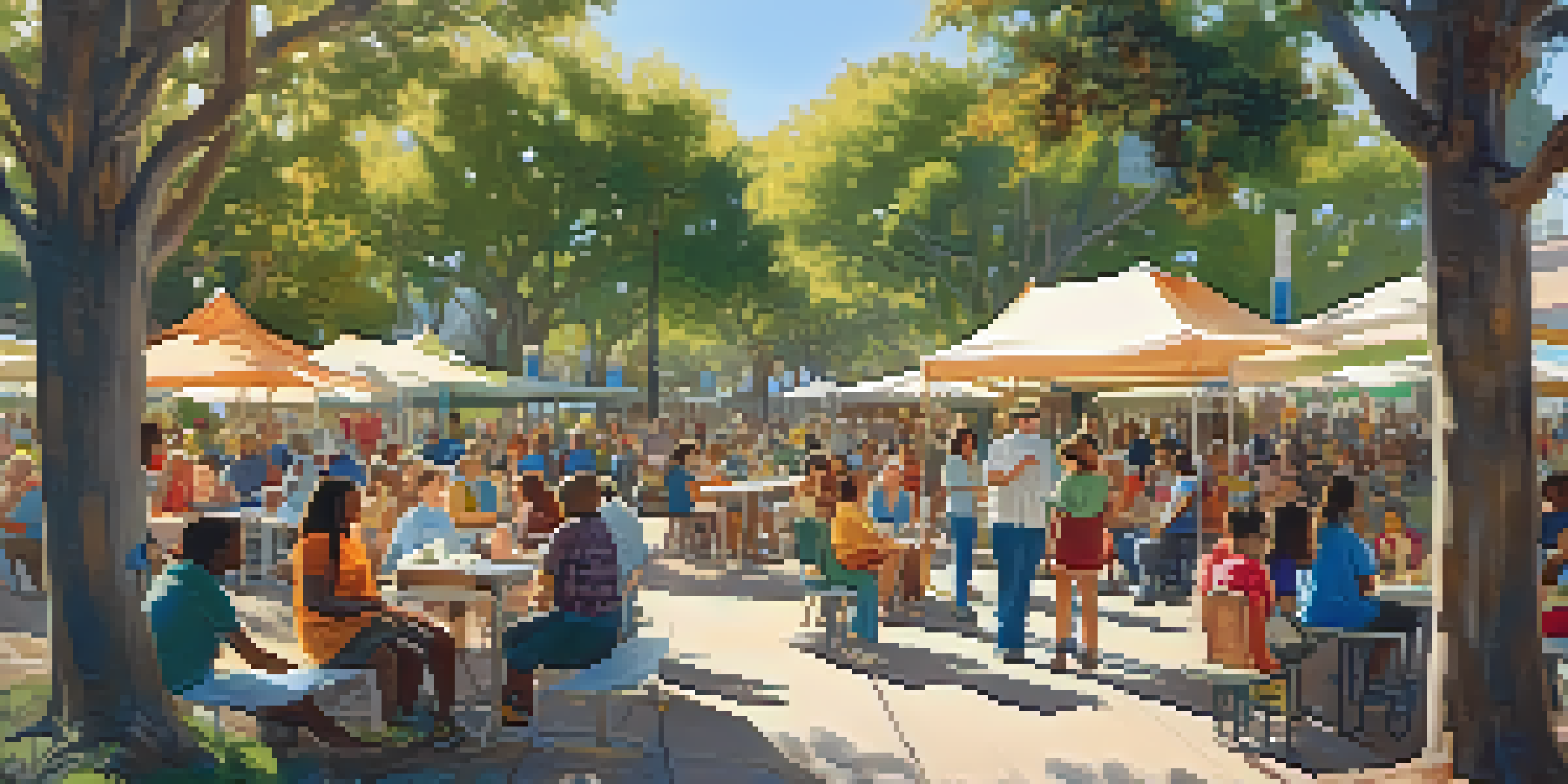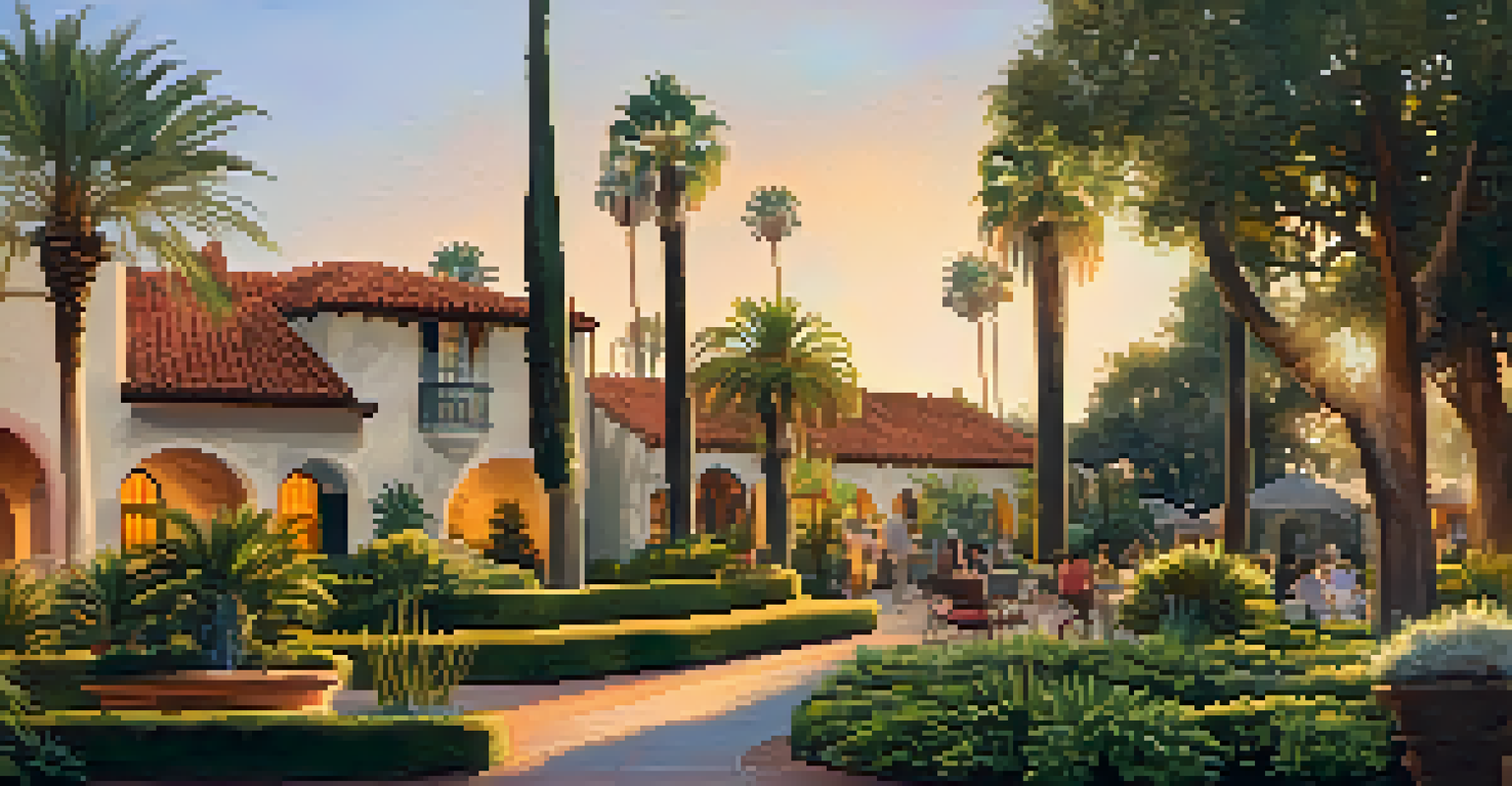Grassroots Movements: Advocating for San Diego's Historic Sites

Understanding Grassroots Movements in San Diego
Grassroots movements are community-driven initiatives that aim to bring about social change. In San Diego, these movements often focus on preserving the city's rich history and culture. They are typically formed by local residents who are passionate about their neighborhoods and want to protect their heritage.
The greatness of a community is most accurately measured by the compassionate actions of its members.
These movements can take many forms, from organized protests to community meetings where citizens voice their concerns. By rallying support from fellow residents, they amplify their message and create a powerful force for change. This collective action underscores the importance of community involvement in local governance.
For instance, when a historic building faces demolition, grassroots groups often mobilize to advocate for its preservation. Their efforts not only raise awareness but also influence decision-makers to reconsider plans that may threaten the community's historical identity.
The Role of Community Engagement in Preservation
Community engagement is at the heart of successful grassroots movements. In San Diego, residents often come together to share stories and experiences related to their historic sites. This shared narrative fosters a sense of belonging and highlights the importance of preserving these landmarks for future generations.

Engagement takes many forms, such as workshops, social media campaigns, and local events. These platforms allow community members to express their opinions and collaborate on preservation strategies. The more people feel connected to a site, the more likely they are to advocate for its protection.
Grassroots Movements Drive Change
In San Diego, grassroots movements empower local residents to advocate for the preservation of their historical and cultural heritage.
For example, when a local landmark is threatened, community-led efforts can lead to petitions, fundraising events, or educational programs. This collaborative spirit not only raises awareness but also builds a stronger sense of community that values its history.
Successful Examples of San Diego Grassroots Movements
San Diego boasts several successful grassroots movements that have made a significant impact on historic preservation. One notable example is the effort to save the Old Town San Diego State Historic Park, where local advocates rallied to protect the area from commercial development. Their persistence led to increased funding and support for the park's preservation.
Preservation is not just about saving buildings; it’s about saving the stories and memories that define us.
Another inspiring case is the campaign to save the Mission Hills Historic District. Residents organized meetings, created informative materials, and engaged with city officials to highlight the district's architectural significance. Their dedication not only preserved the area’s charm but also fostered community pride.
These successes serve as powerful reminders of what can be achieved when passionate individuals unite for a common cause. They demonstrate that grassroots movements are not just about saving buildings; they are about preserving the stories and memories that define San Diego.
Challenges Faced by Grassroots Advocates
While grassroots movements are vital for historic preservation, they often face significant challenges. One of the primary obstacles is limited funding, which can hinder outreach efforts and limit the capacity for organized action. Without adequate resources, it can be tough to mobilize support or sustain momentum.
Additionally, navigating the political landscape can be daunting. Grassroots advocates may encounter resistance from developers or local government officials who prioritize economic growth over preservation. This can lead to frustrating setbacks, making it crucial for advocates to remain resilient and adaptable.
Community Engagement is Key
Successful grassroots initiatives rely on community engagement, fostering connections and collaboration among residents to protect historic sites.
Yet, despite these challenges, many grassroots movements in San Diego continue to thrive. By building coalitions and seeking partnerships with local organizations, they can amplify their voices and create a more significant impact on preservation efforts.
The Importance of Education and Awareness
Education plays a crucial role in grassroots movements focused on historic preservation. By raising awareness about the value of historic sites, advocates can help community members understand why these places matter. Informative campaigns often highlight the cultural, educational, and economic benefits of preserving history.
Workshops, guided tours, and social media campaigns can all serve as platforms for educating the public. When people learn about the historical significance of local sites, they are more likely to support preservation efforts. This can lead to increased community involvement and advocacy.
For instance, educational initiatives around the preservation of the Gaslamp Quarter have successfully drawn attention to its Victorian architecture and vibrant history. By fostering appreciation for these landmarks, grassroots movements can inspire action and mobilize support for preservation.
Collaboration with Local Governments
Collaboration between grassroots movements and local governments can be a game-changer in the fight for historic preservation. By working together, these groups can create comprehensive plans that balance development and conservation. This partnership can lead to more sustainable solutions that benefit both communities and developers.
Local governments often appreciate the insights and passion that grassroots advocates bring to the table. When advocates present well-researched proposals and community support, they can influence policy decisions. This collaborative approach fosters an environment where preservation is valued alongside economic growth.
Collaboration Enhances Preservation
Partnering with local governments allows grassroots movements to create balanced plans that prioritize both development and the conservation of historic areas.
For example, the partnership between preservationists and the city of San Diego resulted in the establishment of historic districts that protect significant areas. This collaboration not only safeguards the past but also enhances the community's identity and livability.
The Future of Grassroots Movements in San Diego
As San Diego evolves, the role of grassroots movements will remain crucial in advocating for historic preservation. The challenge will be to engage new generations of residents who may not have the same connection to historical sites. Innovative approaches, such as digital campaigns and interactive events, may help bridge this gap.
Moreover, as urban development continues to reshape the landscape, grassroots advocates must remain vigilant and adaptable. They will need to leverage technology and social media to mobilize support and raise awareness about preservation issues.

Ultimately, the future of grassroots movements in San Diego is bright, fueled by a strong sense of community and commitment to preserving the city’s rich heritage. With continued dedication, these movements can ensure that the stories of the past are not only remembered but celebrated.